The Ministry of Defence has confirmed significant progress on the Protector drone programme, with the system moving closer to full operational capability.
The advanced unmanned air system (UAS), designed to enhance the UK’s intelligence, surveillance, and reconnaissance (ISR) capabilities, is also being considered for a maritime role in the Northern Atlantic and Arctic regions.
Responding to a parliamentary question from Johanna Baxter, Labour MP for Paisley and Renfrewshire South, Minister for Defence Procurement Maria Eagle outlined the latest developments:
“Protector training has now transferred to the UK, having completed four aircrew basic qualification courses in the United States. Further, four Protector Air Vehicles have now been delivered to RAF Waddington, where they are being maintained by 31 Squadron engineers,” she confirmed.
“The required Test and Evaluation activity and UK training is underway, ahead of the planned platform in-service declaration later in 2025.”
The UK is leading the MQ-9 International Cooperation Support Partnership, which now includes seven participant members—Belgium, Canada, Denmark, Germany, Italy, Spain, and the UK—alongside five observer nations. “The UK is working closely with the NATO Intelligence, Surveillance and Reconnaissance Force to scope options to provide Protector in support of operations in the Northern Atlantic and Arctic regions,” Eagle stated.
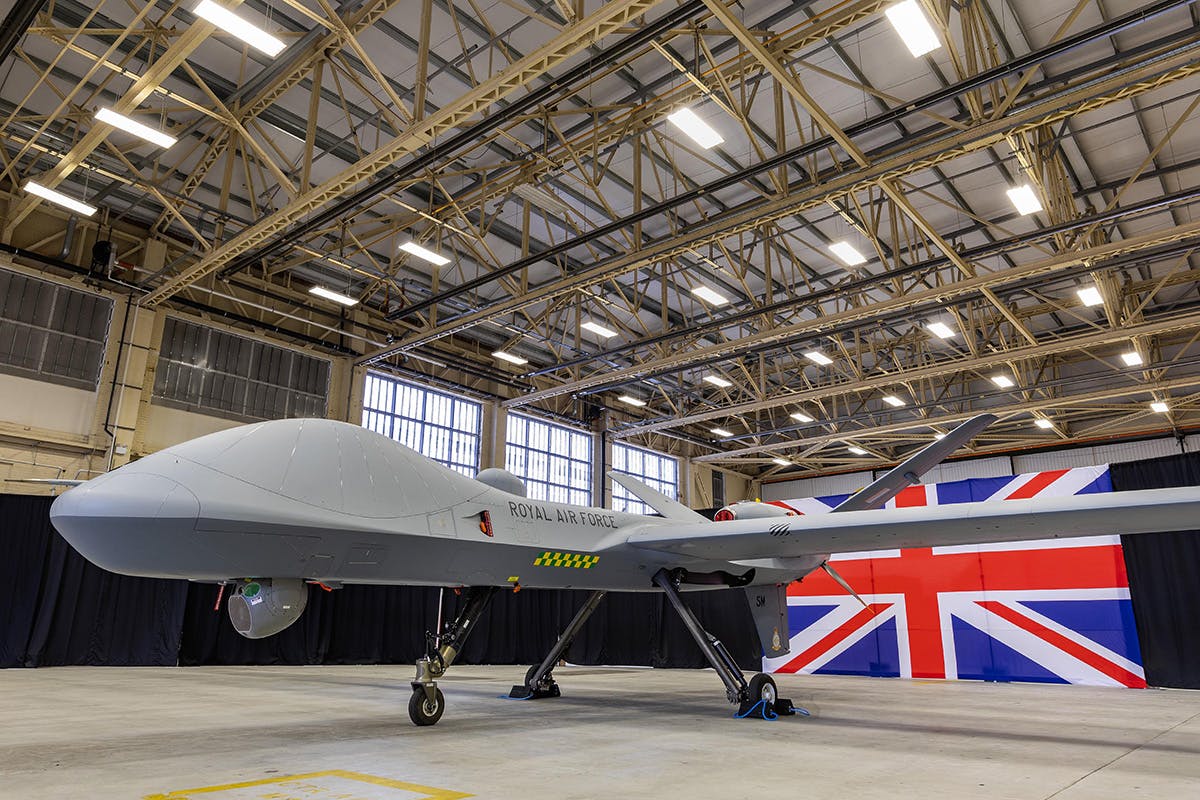
Challenges and Red Rating in the IPA Annual Report
Despite progress, the programme has faced challenges. In a separate question from Mark Francois, Conservative MP for Rayleigh and Wickford, Eagle addressed concerns about the Protector drone system’s downgrade to a red rating in the Infrastructure and Projects Authority (IPA) Annual Report 2023-24.
“The downgrade of Protector to a red rating was primarily driven by a delay to the approval of the Review Note, which is being considered as part of the ongoing Strategic Defence Review,” she said. However, she reassured that “there are no anticipated cost increases, and all costs captured within the Review Note remain extant.”
The timeline for full operational capability has not yet been confirmed.
At the UK Defence Journal, we aim to deliver accurate and timely news on defence matters. We rely on the support of readers like you to maintain our independence and high-quality journalism. Please consider making a one-off donation to help us continue our work. Click here to donate. Thank you for your support!


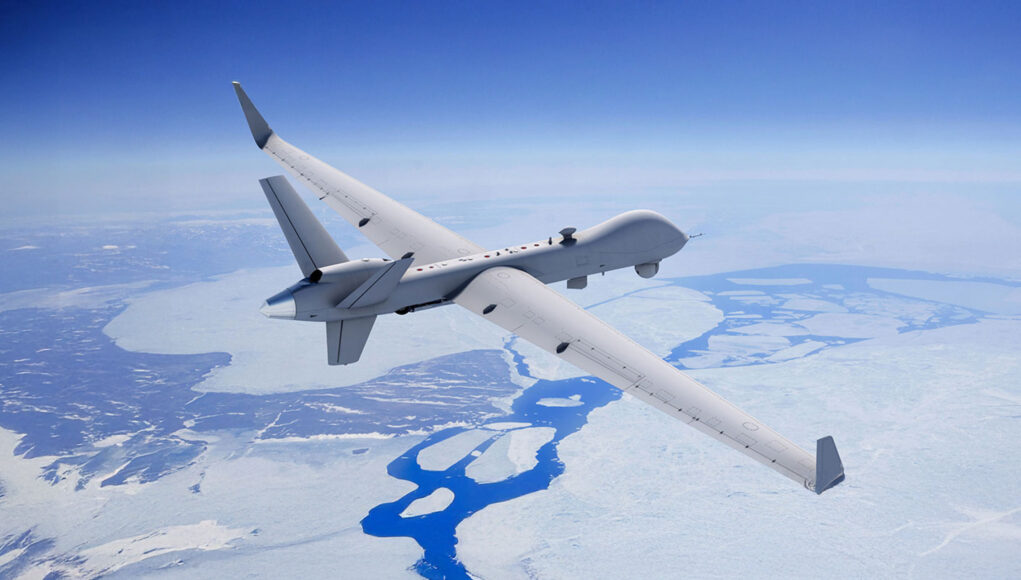
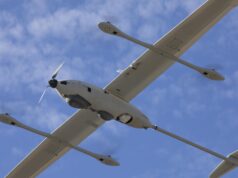

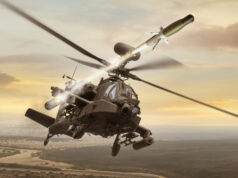
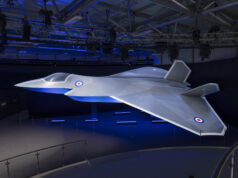

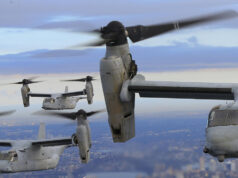


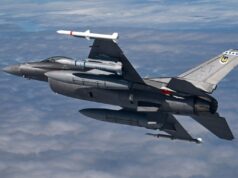


I think we definitely require an addional batch of Protectors in their full Sea Guardian guise to support the P7 fleet.
A no brainer having a maritime role. These are the first operational RPAS of this type to be home
based. Predator/Reaper spent their time monitoring terrorists and insurgents in the Middle East, being unable to fly here.
Will they double hat them and fly them from the carriers too, or buy another batch for the FAA?
I understand the Mojave is basically this aircraft?
I agree, I don’t even think we need a new batch to get started on this, the current aircraft can take the maritime radar. Sonar buoys are probably not that essential but nice to have long term. As for Mojave we should make a priority of getting four onboard the QE class ASAP. My understanding is that the original Mojave aircraft used in trials is not the same but what GA are proposing as a final solution is the exact same aircraft just with a different wing kit which can be changed. The Maritime radar is already rated to provide AEW and air to air tracking which would be a great very high altitude supplement to our mid altitude crowsnest AWACS capability.
We have little need for these flying over the ME hunting terrorists and plenty need over the North Atlantic filling in for P8 and frigates so we should divert the current fleet to those tasks then buy some more maybe even just keep the current MQ9 on longer to cover the Middle East.
I agree completely, this shift is a recognition that the original role of Protector just isn’t as necessary as it used to be.
Much more useful over the North Atlantic and Baltic, sweeping huge areas of sea in a single mission.
Mojave isn’t all that useful for the carriers. The range with any effective strike payload isn’t all that great because it’s designed to fly from very close to the front lines. A better idea might be to get a further few Protector, plumbed for sonobuoys and the STOL wing kit (assuming the flight deck operations can be sorted out).
HI DM – no doubt this has made you happy. I recall you advocating this very thing a couple of years ago on this forum!
Not quite.
Mojave is a STOL adaptation (not wing kit) for the very much smaller Grey Eagle drone. It’s largely a CAS/tactical reconnaissance thing, like a more rugged and capable Watchkeeper.
Protector is absolutely massive in comparison, MTOW of 12,500lbs rather than 7000 and nearly twice the endurance for any given payload.
We’ve discussed on NL that there are actually issues fitting it on the deck of the QEs if you want to retain the F35 park to port and the taxiway to starboard, and landing accuracies make the problem worse. The STOL kit (this time not a separate variant) shortens the wingspan somewhat but it’s still a big lad.
Even with the slightly reduced performance of the STOL kit, the endurance still outdoes any manned MPA which is the main advantage for the carriers.
There’s only 16, this would definitely require a larger order
16 is plenty for the naval mission and Europe, just keep the older MQ9 on in the Middle East for terrorist role.
Exactly this.
Sadly, as thing’s stand, I understand the legacy Reapers are going.
The usual MoD thing, seems such a waste as the need for persistent ISTAR over the ME has not gone away.
We have the assets out there.
Use them?
Agree…binning something because you have something new seems to be an MOD obsession…unless they don’t want to buy something then they keep it running way beyond the time it should be binned.
Spot on Danieie!
We need more. End of.
Original requirement was for 20 but was then cut to 16 – surprise, surprise……
I’m sure I queried a few weeks back whether the downgrading of a project (can’t remember which) presumed from some of the associated as usual fluffy language expressed by Eagle (or whatever lacky expressed it) could possibly be due to delays explicitly due to the pending the Defence Review. At that point I didn’t even myself believe it was likely, it just seemed stupid to downgrade something due to factors outside of the actual project itself. However the above statement seems to suggest in this case that actually is an important factor. Even by defence standards claiming a project is facing hurdles based on the fact you have introduced those hurdles externally is a rather undermining and arguably inane event that to a great degree makes such ongoing programme assessments increasingly pointless in themselves, so perhaps should attract a red rating.
You are basically right in what you are saying but these audits are essentially paper trial inspections. They are primarily concerned with understanding whether the project has followed the ‘process’. My reading of the above is that in this case, due to unfortunate timing, the Review Note has been held up while the project has trundled on, effectively meaning it as not got all of the necessary documentation in place to move forward. However, I suspect there has been an outbreak of common sense meaning the project continued without the document in place, probably because there was an assessment that it was up to scratch.
I have no idea why it couldn’t be signed off… but major projects have a major hoops to jump through.
Cheers CR
Hopefully the options held on a further nine will be taken up, preferably with vstol kits when available.
VSTOL? Surely you mean STOL?
If we take up the further nine, they should be intended from the outset to operate in maritime patrol, both from home and from the carriers with wing kits.
Ideally Spear would be integrated on the whole fleet, as well.
Sadly having a search radar mounted on the Protector won’t make a better overall AEW platform than Crowsnest, even if it can cruise at 40,000ft compared to the Merlin’s 10.000ft. The reason is the size and type of radar carried. Due to the aircraft’s relatively small size and electrical power generation, you will be limited to using X-band (8 to 12GHz) or above radars. Admittedly a modern X-band AESA will definitely perform better than the Crowsnest’s Searchwater 2000. As it can generate a much tighter beam pattern, along with a significantly faster sweep rate. So for a similar power output to the Searchwater, it should detect targets further away. But not by as much as you’d hope!
Electromagnetic (EM) waves as they increase in frequency, become increasingly more susceptible to atmospheric interference. The molecules in the air absorb the EM Wave, this natural phenomenon is called atmospheric attenuation. Which is an absolute pain, as it means you have to generate increasingly more power to transmit your radar beam to reach the same distance a lower frequency radar can achieve. This causes a major packaging issue. As you need to match the wavelength of the transmission to the antenna. Otherwise you will suffer significant losses in transmitting. You can get away with using half-wave or even quarter wave di-pole antenna. But your quality for reception will suffer. Annoyingly for Electronic Steered Arrays (PESA or AESA), the antenna elements must also be at least a half-wavelength apart. Otherwise you will get feedback, where one antenna will transmit in to another.
A Protector with say Leonardo’s Osprey 50 radar fitted it. Should provide a better target detection and should detect them slighting further away. The Osprey is an X-band AESA which is supposed to have a low operating power footprint. Leonardo, however, won’t publish the radar’s power figures, as you can work out some of the performance details from it. Leonardo have said the radar can detect airborne targets over 200 miles away. Which is possible, however they haven’t said what the target was. For example the Typhoon’s mechanical steered Captor-M is said to be able to detect a fighter sized target around 150 miles away. Captor is significantly more powerful than the Osprey. So I suspect Leonardo are being economical with the truth. Where the target is likely to be a commercial airliner with a 25m2 radar cross section (RCS), rather than a 4th gen fighter aircraft with a 1 to 5m2 RCS.
I have described before the issues of using a number of networked drones, that use X-band radar to provide AEW. The main issue is the threat from weapons such as the Russian R37 and Chinese PL17, that have a published range of 250 miles. These have been specifically designed to take out AEW platforms. An X-band AEW drone type platform will not detect the approaching launch aircraft as it reaches it launch point, additionally it won’t detect the missile until it gets fairly close. Unless you build a MQ-9 type drone that generates significantly more electrical power to boost the transmission output, the X-band radar will not provide enough early warning.
The problem is however solvable. You just need a bigger twin engine drone, that can power and carry either a S-band (2 to 4GHz), or L-band (1 to 2 GHz) or a UHF (300MHz to 1GHz) radar. As these radars can detect fighter sized targets over 250 miles away. Sadly due to the likely size and weight of the drone and the radar, it will be necessary for CATOBAR. Though the scope of the MoD’s CATOBAR request for information may be looking at this problem.
I think we’ve all accepted that as a pure AEW platform Protector won’t cut it, but at least the Seaspray radar has an air to air mode and so could contribute to the air picture.
The real advantage is the long endurance “stare” at a surface target or the option of dropping sonobuoys at extreme range for a fraction of the cost of a P8.
What are your opinions on the potential for the Proteus helicopter in the AEW role?
The Leonardo Proteus helicopter drone, with either the Thales Seaspray AESA or a Leonardo Osprey AESA, would be very useful for ships that are not attached to a carrier force. Like I mentioned earlier, you really require a radar with greater than 250 miles detection range for a carrier group. Otherwise there is potential for your opponent to take it out, before the threat is detected in time. Mind you if the drone is operating close to the parent ship. The ship’s air defences may be able to defend the drone from the threat.
If for example we have a Type 23/26/31 or even a Type 45, patrolling off the coast of Yemen. The very fact that you have an airborne radar platform that extends the ship’s radar horizon, will be highly advantageous. Even if it means the radar horizon is only say 100 miles. The ship will be significantly forewarned if a missile/drone strike is on its way. Plus if the ship has a surface to air weapon with a greater than 31 miles (50km) range. It can potentially engage targets over the visible horizon. Thereby giving it more time for a follow up shot, if any initial interceptor missiles miss. The ship’s primary radars will cover a vast distance from the radar horizon upwards.
The main threat to the ship in this area of operations, is the sea skimming missile that uses the visible horizon for cover, i.e. Exocet and its cloned Chinese and Iranian copies. Drones in a swarm could swamp a ship’s defences but they are pretty slow, so the crew should have time to work out a strategy to deal with the threat. The anti-ship ballistic missile is now a proven threat, although the ones the Houthis have been firing have a very small chance of hitting a ship, as most “so far” have missed their targets. Both Seaspray and Osprey, being AESA X-Band radar, will be very good a detecting very small targets near to the sea. Which longer wavelength radars struggle with, without significant signal processing. So these radars will be ideal at spotting Exocet types of threats, not to mention a sub’s periscope/snorkel. Another bonus is that the radar might be able to detect the launch point, allowing the ship to respond in kind. Or work out a pattern of life, to see where the weapons might be stored, or the where the operators reside. Again giving the ship more options of how to reply to the threat.
There are a couple of unanswered questions though. The first is about the aircraft’s performance. The main one of which is how high it can fly and for how long, whilst carrying the radar? As this will form how you use it operationally, especially when patrolling near a high threat area, such as Yemen. If for example we have a Type 31 patrolling off the coast of Yemen shepherding shipping from Houthis attacks. If the drone can only stay in the air for 8 hours, then needs to return to the ship for refuelling. I am pretty certain the Houthis thanks to Iran, have the ability to detect if a radar is operating or not. Which if they discover is not present, leaves a window of opportunity to engage shipping.
Another question, is how big is the aircraft’s parked footprint. In most images it shows the aircraft being approximately half the size of a Wildcat. Which could mean there is potential for a T31 and T26 to house two Proteus in a hangar along with a Wildcat/Merlin. Not so sure about a T45, and probably only just about squeeze one in with a Wildcat on a T23. With two Proteus, you can overlap the transit to and from the ship, when the drone on patrol needs refuelling. It does mean you will carry significant risk, as you don’t have a spare in case one goes unserviceable. Plus at some time you will need to carry out maintenance to service the drone, which may overrun the changeover period. The T26 and T31 with their large mission bays inked to the hangar, do have the potential to house more than two Proteus which will mitigate this issue, thereby giving you potentially 24/7 coverage. When the ship is operating alone in a hostile area. I think it becomes more prudent to carry as many of these drones as practical. Where you’d need a minimum of three aircraft dedicated to AEW, to provide 24/7 coverage. If there’s room for more, these could be assigned ASW duties. I do see Proteus as a really good force multiplier for the Navy, just need to make sure we buy plenty of them, rather than sitting on the fence waiting for the gold plated solution!
Thanks Davey, that’s really useful.
So Proteus isn’t really viable as a carrier AEW, but is unique in that it can be operated from a typical escort alongside the standard helicopter?
I’ve seen pictures of a T45 hangar with a Lynx and Wildcat side by side, so I think you could have 2 Proteus alongside the Wildcat, maybe 4 or 5 by themselves.
Hopefully Leonardo hurry up and get some torpedo/surface strike options for the module alongside ASW and AEW. Then it becomes viable to replace Wildcat rather than just act alongside it.
I think Sea Venom is drop launched, so an internal weapons bay would be possible.
I think it would be quite easy to fit a wing to either side of the Proteus’s fuselage, like they did with the Wildcat. This could then allow a mixed load out configuration such as Martlet and Sea Venom.
To see how useful a Proteus AEW would be for a Type 45. Let’s consider the scenario of the T45 sailing off the coast of Yemen and being attacked by the Houthis, who have just launched a Noor sea skimming missile from a coastal battery. This has a published cruising speed of Mach 0.9 and can perform a terminal dash of Mach 1.4 towards the target. Which is equivalent to 1111.32km/h and 1728.72km/h. Though the published data doesn’t say at what distance, the missiles accelerates towards the target in the terminal phase.
The T45’s Sampson radar is mounted some 40m above sea level, giving it a radar horizon of about 26km. If it spots the missile at 26km, the ship has about 8 seconds (if missile stays at its cruising speed) to react before it is hit. So not a lot of time to validate the threat and respond.
However, if the ship is operating a Proteus with the AEW module fitted. If it is operating above the ship at a height of 5000ft. This would give the ship an extended radar horizon of about 160km (100 miles). Thereby giving the ship around 49 seconds to validate the threat and work out a response. Admittedly this all depends on how close the ship is to the launcher. But I’m keeping the scenario pretty simplistic.
Although this is a theoretical exercise, it does show that having an AEW platform gives the ship a lot more time to make sure the threat is valid. But also to make a decision on how to respond. Time is always the crucial factor when dealing with missile threats and how to respond.
A great summary Davey, cheers for that. I don’t understand the point of an AEW helo platform. I imagine it can’t go much above 10,000 ft (crew would need oxygen masks). So would this not easily limit how far the radar can see due to the earth’s curvature etc).
Hi mate, yes the cabin of a Merlin being unpressurized would normally limit the height the aircraft can reach. Unless the crew use supplied oxygen. Needing to wear a close fitting mask for a couple of hours is quite fatiguing, as it makes the skin really itchy.
The radar horizon extends slightly further than the visible horizon, due to the way the atmosphere affects radio waves. At 10,000ft the radar horizon is about 227km (141 miles) away, whilst at 20,000ft it’s 321km (200 miles). So irrespective of the radar’s effective radiate power. Operating at a higher altitude will potentially allow the radar horizon to be extended and thereby be able to see targets from further away.
Great summary – thanks so much Davey!